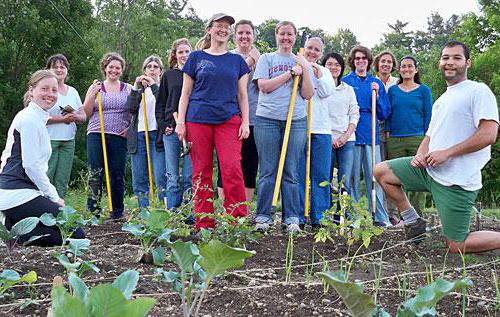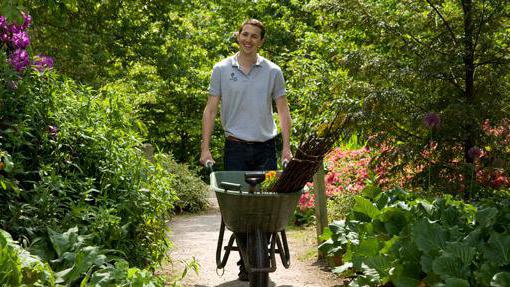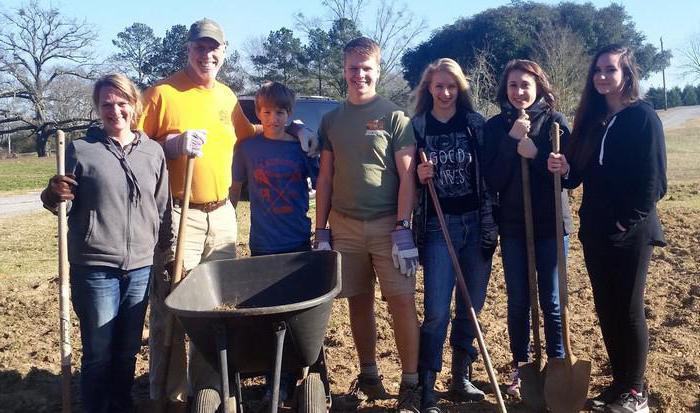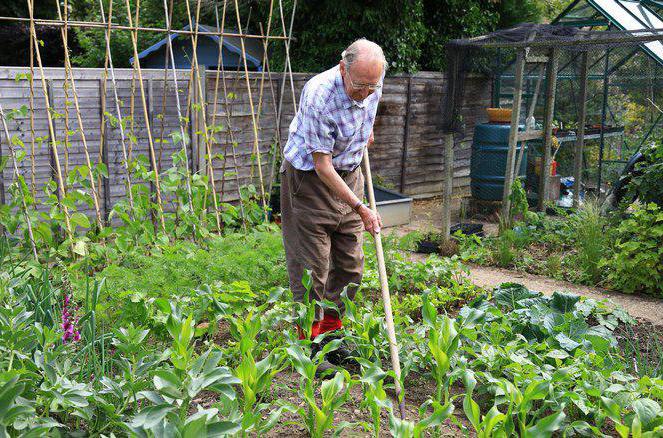Work on your site is considered one of the common forms of leisure for many people. Together with their loved ones, summer residents and gardeners make up almost half of the country's population. They are especially numerous in large cities of the European part of Russia. On the modern map of horticultural partnerships, there are about 80 thousand associations of citizens. They supply almost half of the berries and fruits, vegetables grown in the country. Let us further consider in detail what a horticultural non-profit partnership is.
Normative base
Gardeners, gardeners and summer residents have much in common. However, they differ from each other in a number of ways. FZ-66 "On horticultural partnerships, garden and country associations" gives definitions to these three categories. Land is provided to citizens for various purposes. Garden and garden plots are used for growing vegetables, fruits and berries and others agricultural crops. Cottages are provided for recreation, but with the ability to cultivate the land and harvest. At the same time, garden and garden plots are distinguished by the fact that the owners of the first can erect household and residential buildings on them. The owners of summer cottages may or may not have such an opportunity. The gardener does not have the right to register in a residential building erected on his land. This opportunity is provided to owners of cottages.
Legal disagreement
Until 1990, citizens could build only one-story summer houses on garden plots. At the same time, the size of structures was strictly regulated. The maximum permissible sizes of buildings were established by the charter of a horticultural partnership. In the early 90s, the situation in the country changed dramatically. However, the law remains the same. Ignoring the rulemakers' changes caused a lot of controversy in society. A quite natural reaction to the discussion was the Resolution of the Constitutional Court No. 7-P of April 14, 2008. In connection with numerous complaints from citizens, the Abs. 2 tbsp. 1 Federal Law "On horticultural associations, garden and country societies" for compliance with the Constitution. Subsequently, several more acts were adopted on this issue. As a result, the ban on registering persons at the place of residence in a suburban building located on a garden plot located within the territory of settlements was found to be inappropriate to the Basic Law. Such a conclusion is present in the decision of the Constitutional Court No. 13-P of June 30, 2011. 
Horticultural Nonprofit Partnership
The regulatory acts do not establish prohibitions on conducting individual farming. However, as practice has shown, in bringing people together is more beneficial both for themselves and for society. In this regard, citizens voluntarily establish associations, whose task is to assist participants in solving common socio-economic issues. One of the most common types of such associations is the horticultural partnership (SNT). It can be a large or small association of citizens. The main condition is the presence of at least three members. The Law "On Horticultural Partnerships" requires their registration. It is carried out in the manner prescribed for legal entities. 
Constituent document: features
The charter acts as it. It is approved at the general meeting of members of the association.Over the past few decades, a lot of significant changes have occurred in the country. Some of them made serious adjustments to the social and economic life of the population. Affected changes and various associations of citizens, including horticultural partnerships. The constituent documentation of such societies should correspond to the existing situation in the country. In practice, quite often the charters of partnerships are drawn up according to the standard model.
This does not always correspond to the realities of life. It follows from this that the main SNT document does not contribute to the improvement of the association management scheme, nor does it help to rationally dispose of joint property. As a result, those who entered into a horticultural partnership cannot fully realize their civil rights and fulfill the duties assigned to them. In this regard, the development of a constituent document must be approached not as a formality, but with a full understanding of its importance. It should spell out the conditions, the procedure in accordance with which a horticultural partnership is created, the rules for the participants to join and exit the association, their duties, rights, and responsibilities. Moreover, all sections should take into account the specifics of the formed SNT, comply with federal and regional regulatory acts. 
Control
The powers of the chairman of the SNT are determined by 66 Law of Horticultural Associations. They are also recorded in the constituent document of the association. The supreme management body is the general meeting of members. Secret ballot on it determines the responsible persons (board). At the request of a certain part of the association, the question may be raised of their early re-election. At each meeting, a protocol is kept. It is signed by the secretary and chairman. These protocols are stamped and stored permanently.
Member Rights
An adult citizen who has a plot within the territory of the association may enter into a horticultural partnership. Members of the company can elect and be elected to the board. They are also vested with the right to independently conduct farming on their land according to the type of permitted use. If the allotment is not withdrawn from circulation, has no burden or restrictions, the owner can freely dispose of it at his discretion. He has the right to build, reconstruct, rebuild structures on the site.
Horticultural Partnerships: Contributions
They can be membership and target. The first are formed from components, the most significant of which are the following:
- Remuneration to the chairman and members of the board.
- Tax on common land.
- Payment for services (watchman, electrician, etc.).
- Payment for the use of property.

Obviously, the size of the share allocated for remuneration to the chairman and the board should be equal for all members of the SNT, regardless of differences in the size of allotments. This situation primarily follows from the equality of rights of all participants. The tax component is calculated in proportion to the area of the plots. Payment for the use of property and services should be made only by those members who actually use them. In this case, the provisions of Art. 249 GK. The target contribution for the construction of infrastructure facilities for each participant is calculated in proportion to the size of the allotment. This is due to the fact that the cost of laying the road, water supply, power lines is higher, the larger the area.
Residential buildings
This term is introduced by the aforementioned Federal Law No. 66. This concept is present only in this normative act. The term "residential building" is not in the LCD. Attempts to change the legal status of structures in garden plots were made in the early 90's.In particular, by federal regulatory act No. 4218-1, citizens were given the opportunity to re-register their owned residential buildings located on garden plots and meeting the relevant requirements, into residential buildings. However, after the introduction of the LCD, this norm was abolished.
It should be said that the procedure for recognizing a building as suitable for living in it is constantly accompanied by no less difficulties than putting the building into operation. To implement the decision of the Constitutional Court No. 7-P, the regions can adopt regulations that will govern this process. The opportunity for entities to carry out legal regulation of the recognition of buildings located in horticultural partnerships by residential buildings contributed to the adjustment of the procedure for simplified state registration of rights. In accordance with the order of the Ministry of Economic Development, a new declaration form was approved, which should be used for facilities that do not require a permit for construction work. 
State support
The authorities are ready to help all participants in gardening associations. First of all, the state contributes to the formation of transport and social infrastructure. In particular, trade and service enterprises, sports and playgrounds are being created, issues related to security are being addressed, and so on. One of the key factors in the development of SNT is transport accessibility. In this regard, the territorial bodies provide in the support programs not only assistance in the construction of roads. Of great importance in terms of accessibility is the development of public transport. Some municipalities organize special routes on which citizens can get to their sites on weekends.
Conclusion
As practice has shown, horticultural partnerships and other non-profit associations of people have proven their effectiveness. Such societies quickly adapt to the conditions of our time. This suggests that, despite a fairly large number of individual farms, collective associations occupy far from the last place in the life of citizens. The law provides for equal rights for all participants in a horticultural partnership. These include the opportunity to voluntarily withdraw from the association.








